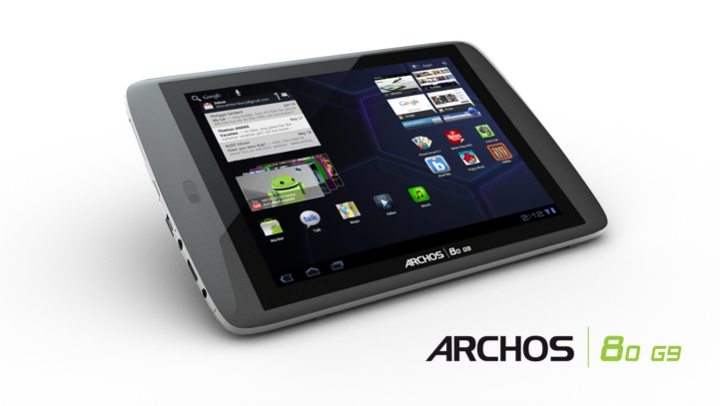Archos G9 tablets go on pre-sale from 20th September
Andy Ruffell / 13 years ago
 In June we bought you the news that Archos were releasing a range of new tablets with either flash HDD or mechanical HDD, well the time has come to give you release dates and pricing.
In June we bought you the news that Archos were releasing a range of new tablets with either flash HDD or mechanical HDD, well the time has come to give you release dates and pricing.
The device’s come with Android 3.2 Honeycomb which has been specially designed and optimized for tablet use, and features a full web experience and has support for Flash 10.3 also with access to the Android Market giving users the choice of over 250,000 apps, the device comes with suite of Google mobile software including Google Talk, Gmail, Google Maps with Street View and Navigation Beta and Google Calendar.
To give users the best of both worlds the hard drive versions use a Seagate Momentus Thin hard drive with a dedicated 4GB flash caching system a hybrid solution that limits the HDD spinning to when it is only needed also providing longer battery life.
The ARCHOS 80 G9 tablet featuring a 1 GHz dual-core processor will be on pre-sale starting September 20th 2011 at ARCHOS.com with the following recommended retail price:
- ARCHOS 80 G9 8GB – 1 GHZ at $299
Additionally, the ARCHOS 80 G9 8GB tablet will be available online and at select retailers including HH Gregg, Amazon, Newegg, Tiger Direct, Brandsmart and Electronic Express on September 30, 2011.
The ARCHOS G9 tablets running a dual-core processor up to 1.5 GHz will be available in stores and online in October with the following recommended retail price:
- ARCHOS 80 G9 16GB – 1.5 GHz at $329
- ARCHOS 80 G9 250GB – 1.5 GHz at $369
- ARCHOS 101 G9 16GB – 1.5 GHz at $399
- ARCHOS 101 G9 250GB – 1.5 GHz at $469
With its 8’’ G9 tablet, ARCHOS will be the first to market with a dual-core, Android Honeycomb 3.2 tablet under $300 featuring an OMAP 4 processor with an ARM Cortex dual-core A9 at 1 GHz for $299. Pushing the technological boundaries even further, the ARCHOS G9 “Turbo” will be the first and only Android tablet in the market under $400 to use the OMAP 4 dual-core processor up to 1.5 GHz, which gives it 50% more raw computational power over its 1 GHz competitors.



















